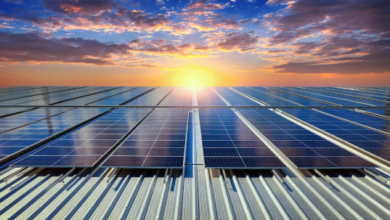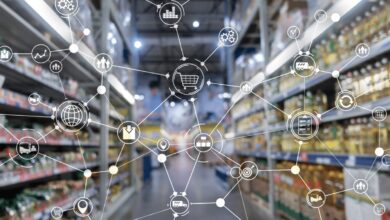
Stanton Thomas, SVP Sustainability Solutions at o9 Solutions.
The world is on fire. And drowning. And drying out. All at the same time. Across our planet, climate chaos is creating scenarios that haven’t been seen for literally millions of years. Science is telling us that we humans are the cause of it. And the reality is that supply chains are a major contributor to the greenhouse gases (GHG) causing this crisis.
The purpose of this blog isn’t to shame, blame, or defend the actions that have brought us to this point, but rather to highlight the science that is helping us understand what is happening and hopefully inspire collective next steps to stop or slow down the climate crisis.
Let’s start by examining the situation and then work back to the paths supply chain leaders can take to address the problem.
What is the current state of the world’s climate?
First, we need to be clear about where we are. To be honest, it’s not good.
It is unequivocal that human influence has warmed the atmosphere, ocean, and land. Widespread and rapid changes in the atmosphere, ocean, cryosphere, and biosphere have occurred.
In fact, in 2019, atmospheric CO2 concentrations were higher than at any time in at least 2 million years (high confidence), and concentrations of CH4 and N2O were higher than at any time in at least 800,000 years (very high confidence).
Many changes in the climate system become larger in direct relation to increasing global warming. They include increases in the frequency and intensity of hot extremes, marine heatwaves, and heavy precipitation, agricultural and ecological droughts in some regions, and proportion of intense tropical cyclones, as well as reductions in Arctic Sea ice, snow cover and permafrost.
This is a clear wake-up call that things are going wrong, and we’re going to have to face the situation.
Can we fix it?
The short answer is yes. The longer answer is “Yes, but not in our lifetime”. The IPCC report states, in section B.5, “Many changes due to past and future greenhouse gas emissions are irreversible for centuries to millennia, especially changes in the ocean, ice sheets and global sea level.”
Which means that even if we, across nations, geographies, and corporations, simultaneously took up the mantle tomorrow and said, “We are going to stop contributing CO2 to the environment”, we’ll continue to see temperatures and ocean levels rise, droughts and fires, and other severe weather patterns occur. But the next generation, and the one after that, will benefit from our actions now.
How can digital supply chain solutions make a difference?
Supply chain disruption is guaranteed because of climate change. At some future date either raw materials, manufacturing facilities, or distribution networks (or all three) will be impacted because of this problem. And it is already happening.
The ability to do scenario planning will be required to determine the best course of action to mitigate the impacts of climate volatility, either to the bottom line or to the customer experience. So having a digital supply chain twin will be the only way to make sense of all the variables, options, suppliers and so on to find the optimal solution to this problem.
By adopting a digital supply chain planning solution, you’re being proactive and preparing for the worst. For your shareholders, that’s a great message. But even more importantly, the adoption of a digital twin gives you the benefit of better planning. Better quality, real-time information from your trading partners (but also from the market) and better scenario planning all contribute to a better outcome.
Better planning will reduce obsolete inventory and eliminate waste. A reduction in emissions from transporting products―particularly expedited shipments― and a reduction in electricity required for manufacturing and storage will, you guessed it, minimise, and eventually eliminate your organisation’s contribution to the CO2 problem. The benefits of better planning on your company’s carbon footprint are obvious.
For the leaders out there who have a stated goal of a green supply chain, adopting a digital supply chain allows your organisation to engage in eco-friendly planning and decision-making, helping create a sustainable future. An added benefit of putting a stake in the ground and making environmental sustainability a core value is that, by publicly signalling your intent, you can find and align with suppliers and technology partners with similar agendas. And this is how to get the ball rolling.
Either way, the decision to engage in digital supply chain planning delivers the best of both worlds: The ability to address supply chain challenges with “resiliency in the face of climate driven volatility” and “sustainable supply chain practices that minimise the lasting impacts of climate change”. A win-win for any leader.
Ultimately the necessary action, regardless of motivation, is clear. The time is now and whatever rationale resonates best to support a decision to invest in a net-zero carbon future, there are companies, like o9 Solutions, that have the vision, the technology, and the passion to help us all embrace a greener supply chain future.






